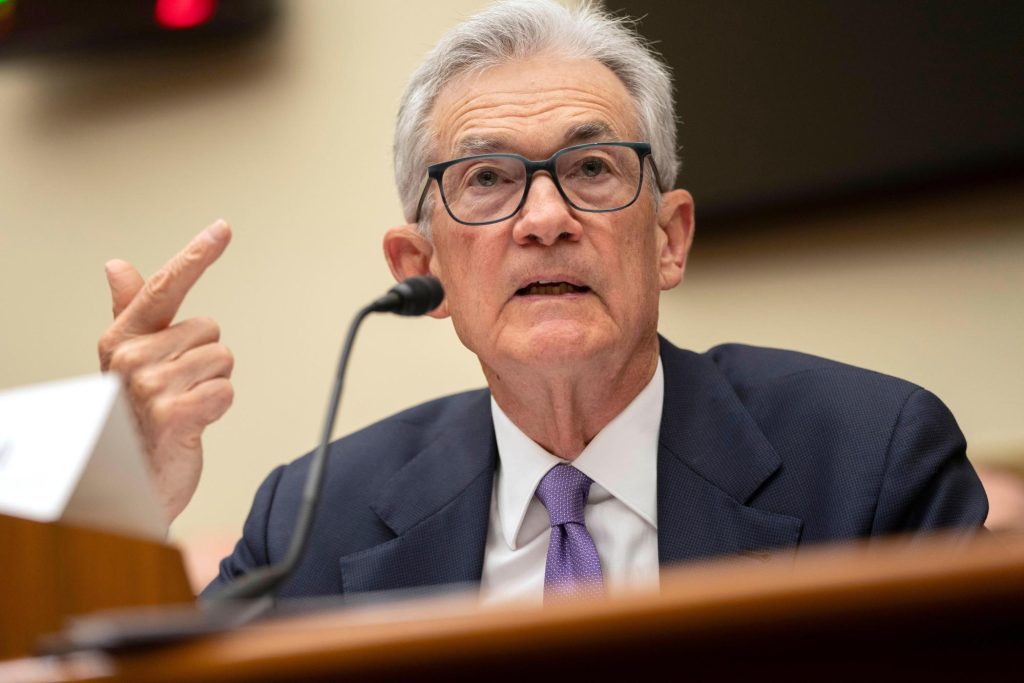By CHRISTOPHER RUGABER (AP Economics Writer)
Federal Reserve officials indicated on Wednesday that they anticipate reducing their main interest rate three times in 2024, despite seeing inflation staying high at the beginning of the year. However, they project fewer rate cuts in 2025 and slightly raised their inflation forecasts.
Following their latest meeting, the officials maintained their benchmark interest rate at the same level for the fifth consecutive time.
In their new quarterly projections, Fed officials predict that there will be continued strong growth and persistent inflation this year and the next. Consequently, they anticipate that interest rates will need to remain slightly higher for a longer period.
They now predict three rate cuts in 2025, down from four in their December forecasts. They also anticipate that “core” inflation, which excludes volatile food and energy costs, will stand at 2.6% by the end of 2024, up from the previous projection of 2.4%. In January, core inflation was at 2.8%, according to the Fed’s preferred measure.
Overall, their forecasts indicate that policymakers expect the U.S. economy to maintain an unusual combination: a strong job market and economy alongside inflation that continues to decrease, albeit more gradually than anticipated three months ago.
Most economists have identified the Fed’s June meeting as the most likely time for it to announce its initial rate cut, which would start to reverse the 11 increases implemented two years ago. The Fed’s increases have helped reduce annual inflation from a peak of 9.1% in June 2022 to 3.2%. However, they have also led to significantly higher borrowing costs for businesses and households.
Over time, rate cuts would result in lower expenses for home and auto loans, credit card borrowing, and business loans. They could also support President Joe Biden’s re-election campaign, which is encountering widespread public dissatisfaction over higher prices and could benefit from an economic boost stemming from lower borrowing rates.
Two recent government reports indicated higher-than-anticipated inflation. One report revealed that consumer prices rose significantly from January to February, surpassing the Fed’s target. The second report showed that wholesale inflation was surprisingly high, indicating potential inflation pressures in the pipeline that could keep consumer price increases elevated.
Powell and the 18 other officials on the Fed’s interest-rate-setting committee have been assessing how – or whether – those figures should impact their schedule for lowering rates. The main question is whether they have maintained rates at a high enough level for a long enough period to fully control inflation.
Even though consumer inflation has decreased since mid-2022, it has remained above 3%. In the first two months of 2024, service costs such as rents, hotels, and hospital stays have stayed high. This suggests that high borrowing rates have not been effective in slowing inflation in the extensive service sector of the economy.
When the Fed raises interest rates, it makes borrowing more expensive for things like homes, cars, and appliances, but it doesn't really affect spending on services, which usually doesn't involve loans. As long as the economy is doing well, there's no strong reason for the Fed to lower rates until it feels like inflation is consistently under control.
However, the central bank has to balance this with another concern: if it waits too long to lower rates, a long period of high borrowing costs could seriously harm the economy and even push it into a recession.
Powell talked about this when he spoke to the Senate Banking Committee this month. He mentioned that the Fed is feeling more confident that inflation is slowing down, even if it's not happening in a direct line.
For the most part, the U.S. economy is still in very good shape. Employers continue to hire, unemployment is low, and the stock market is at record highs. However, consumer prices are still much higher than they were before the pandemic, which has been a source of dissatisfaction for many Americans, with Republicans trying to blame Biden for it.
There are indications that the economy might become weaker in the next few months. For example, Americans reduced their spending at retailers in January and February. The unemployment rate is now at 3.9%, which is still good, but it has gone up from 3.4%, the lowest in 50 years, last year. Also, much of the recent hiring has been in government, health care, and private education, while many other industries are barely adding any jobs.
Other major central banks are also keeping rates high to make sure that they can control consumer price increases. In Europe, there's pressure to lower borrowing costs as inflation drops and economic growth slows. The leader of the European Central Bank hinted that there might be a rate cut in June, while the Bank of England isn't expected to signal an imminent cut when it meets Thursday.
On Tuesday, Japan’s central bank increased its benchmark rate for the first time in 17 years in response to rising wages and inflation finally reaching its 2% goal. The Bank of Japan was the last major central bank to raise its key rate out of negative territory, ending a period of negative rates in some European countries as well as in Japan.









